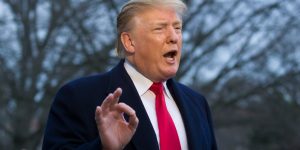When they compared those scores to mass shootings per million residents, they found that for every 10-point relaxation in a state’s gun laws, the rates of mass shootings in that state increased by 11.5 percent. This trend showed up even after the models were adjusted for population demographics like household income, unemployment, poverty, education, incarceration rates, and race. The eight most restrictive states include Hawaii, Massachusetts, New Jersey, Connecticut, Maryland, California, Illinois, and New York. Leading the pack in both permissive laws and mass shooting rate were Vermont, South Carolina, Louisiana, and Arizona. (Florida, where the Parkland shooting took place last year, was the only state not included in the analysis because it doesn’t participate in the FBI’s Uniform Crime Reporting program.)
Both Texas and Ohio, where the latest terror attacks were carried out, also scored high on gun law permissibility. In both states it’s legal to carry concealed weapons in public, provided the gun owner has the proper permits to own it. In Texas, permits are issued to applicants over the age of 21 who pass a four-to-six-hour training course and don’t have any pending criminal charges. According to Ohio’s gun laws, residents 21 years and older must complete an eight-hour training course, not be addicted to any controlled substances, and be able to pass a criminal background check.
Most relevant to the recent killings in El Paso and Dayton, though, is the fact that the semiautomatic weapons used to carry out the attacks can be purchased legally. Only six states and the District of Columbia have enacted bans on these types of military-style firearms. Texas and Ohio are not among them. Both states also allow large-capacity magazines like those the gunmen in both El Paso and Dayton appear to have used to fire dozens of rounds in seconds without having to reload.
It’s worth noting here that while living in a state with strict gun laws does appear to confer some significant public health advantages—fewer gun-related suicides and homicides; one recent study found it cut rates of premature deaths in half—those laws only go so far. Motivated individuals will find ways around them, either over the internet or across porous state borders. The gunman who killed three people in Gilroy, California, in July, for example, traveled to Nevada to buy a military-style rifle configured in a way that was illegal in his home state.
And this type of thing happens a lot. Second Amendment activists often point to Chicago, a city with rampant gun violence in a state that has some of the nation’s strongest gun laws. But most of the guns recovered in Chicago were purchased outside Illinois, in neighboring states with laxer laws, according to a 2017 report by the Chicago Mayor’s Office.
But at least according to Reeping’s analysis, the trend of more permissive laws being linked to more mass shootings is actually gaining momentum. Starting around 2010, the data begins really diverging—mass shooting rates dropped in states with restrictive laws as they accelerated in states with more lax ones.
Reeping says this could be related to polarizing trends in gun policy-making, as generally permissive states make their laws more relaxed and restrictive states clamp down tighter and tighter in the face of rising violence. In Texas, for instance, where four of the ten deadliest mass shootings in US history have taken place, ten new pro-gun laws are set to take effect before the end of the month. The associations are strong, though Reeping shies away from suggesting any causality in the data. “There’s so much going on and we can’t control for everything,” he says. But as an epidemiologist he gets frustrated that the American public is willing to believe every study that suggests coffee is associated with living longer or that eating chocolate is linked to lower rates of depression but view the data linking gun laws to gun violence with suspicion.



